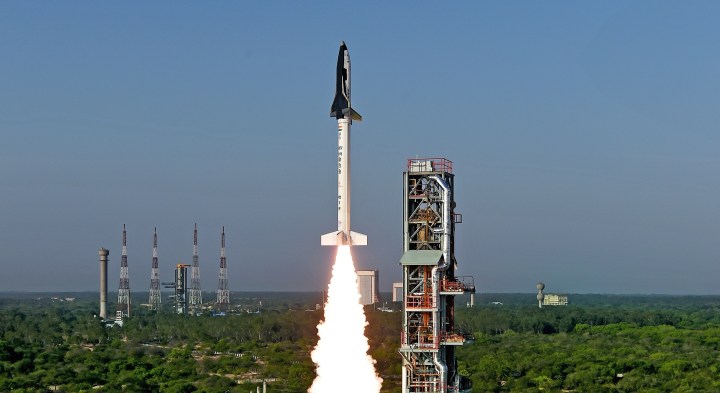
Measuring just 22 feet, the mini space shuttle is dwarfed by the monsters NASA is accustomed to sending into space — American space shuttle orbiters spanned more than 122 feet and had price tags to match. The Endeavor, for example, cost a staggering $1 billion in total. But India’s Reusable Launch Vehicle-Technology Demonstrator (RLV-TD) from the Indian Space Research Organization (ISRO) is much more modest — it set the Indian government back just $14 million. But comparisons aside, this is no small accomplishment for the country — indeed, the proof of concept for the RLV-TD shows that traveling beyond Earth doesn’t have to cost an arm and a leg.
Not only did India manage a successful takeoff, but it also appears that they stuck the landing — while the craft wasn’t expected to actually return to Earth intact, ISRO scientists say that the space shuttle came back relatively unharmed in the Bay of Bengal, and photos support those claims.
Prime Minister Narendra Modi took to Twitter to celebrate his nation’s achievement, crediting the “industrious efforts of [Indian] scientists.” He added, “The dynamism [and] dedication with which our scientists [and] ISRO have worked over the years is exceptional and very inspiring.”
Of course, India is not alone in its mission to make space travel affordable. Elon Musk and SpaceX have recently made headlines for their reusable Falcon shuttle, and Jeff Bezos’ Blue Origin is pursuing the same goal. So don’t get too attached to Earth, friends — we may soon be on our way to a new home altogether.


